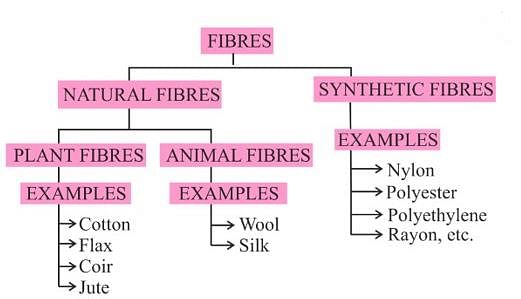CTET & State TET Exam > CTET & State TET Tests > NCERT Textbooks (Class 6 to Class 12) > Test: Fibre to Fabric - CTET & State TET MCQ
Test: Fibre to Fabric - CTET & State TET MCQ
Test Description
10 Questions MCQ Test NCERT Textbooks (Class 6 to Class 12) - Test: Fibre to Fabric
Test: Fibre to Fabric for CTET & State TET 2024 is part of NCERT Textbooks (Class 6 to Class 12) preparation. The Test: Fibre to Fabric questions and answers have been
prepared according to the CTET & State TET exam syllabus.The Test: Fibre to Fabric MCQs are made for CTET & State TET 2024 Exam. Find important
definitions, questions, notes, meanings, examples, exercises, MCQs and online tests for Test: Fibre to Fabric below.
Solutions of Test: Fibre to Fabric questions in English are available as part of our NCERT Textbooks (Class 6 to Class 12) for CTET & State TET & Test: Fibre to Fabric solutions in
Hindi for NCERT Textbooks (Class 6 to Class 12) course. Download more important topics, notes, lectures and mock
test series for CTET & State TET Exam by signing up for free. Attempt Test: Fibre to Fabric | 10 questions in 10 minutes | Mock test for CTET & State TET preparation | Free important questions MCQ to study NCERT Textbooks (Class 6 to Class 12) for CTET & State TET Exam | Download free PDF with solutions
Detailed Solution for Test: Fibre to Fabric - Question 1
Detailed Solution for Test: Fibre to Fabric - Question 2
| 1 Crore+ students have signed up on EduRev. Have you? Download the App |
Detailed Solution for Test: Fibre to Fabric - Question 3
Detailed Solution for Test: Fibre to Fabric - Question 4
Detailed Solution for Test: Fibre to Fabric - Question 5
Test: Fibre to Fabric - Question 6
What is the main difference between weaving and knitting in fabric production?
Detailed Solution for Test: Fibre to Fabric - Question 6
Test: Fibre to Fabric - Question 7
Fill in the blanks:
a) Plant fibres are obtained from _______ and _______ .
b) Animal fibres are _________ and ________ .
a) Plant fibres are obtained from _______ and _______ .
b) Animal fibres are _________ and ________ .
Detailed Solution for Test: Fibre to Fabric - Question 7
Test: Fibre to Fabric - Question 8
What is the primary difference between natural and synthetic fibres?
Detailed Solution for Test: Fibre to Fabric - Question 8
Test: Fibre to Fabric - Question 9
Which of the following processes is used to make fabric from yarn?
Detailed Solution for Test: Fibre to Fabric - Question 9
Test: Fibre to Fabric - Question 10
Which type of fibre is obtained from the outer covering of a coconut?
Detailed Solution for Test: Fibre to Fabric - Question 10
|
3 videos|687 docs|659 tests
|
Information about Test: Fibre to Fabric Page
In this test you can find the Exam questions for Test: Fibre to Fabric solved & explained in the simplest way possible.
Besides giving Questions and answers for Test: Fibre to Fabric, EduRev gives you an ample number of Online tests for practice
|
3 videos|687 docs|659 tests
|
Download as PDF















